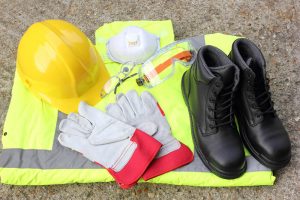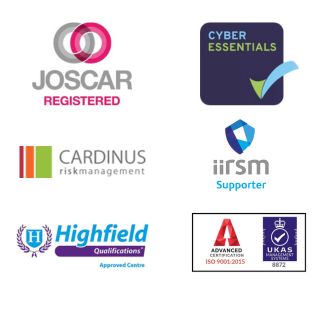What Exactly is PPE?
 Many of us will at some time used some form of Personal Protective Equipment, such as safety boots, hearing protection and goggles. Personal Protective Equipment (PPE) however is never the perfect solution to controlling hazards at work.
Many of us will at some time used some form of Personal Protective Equipment, such as safety boots, hearing protection and goggles. Personal Protective Equipment (PPE) however is never the perfect solution to controlling hazards at work.
As an employer, you have a duty to identify the hazards in your workplace and assess the risk. As part of this risk assessment, you may identify that Personal Protective Equipment is required. What exactly is PPE?
The Legal Bit
The term PPE is defined as including equipment worn and used by people at work to protect them from general and specific risks. Under the Personal Protection Equipment at Work (Amendment) Regulations 2022, PPE is defined as ‘all equipment, including clothing affording protection against the weather, that is intended to be worn or held by a person at work that protects him against one or more risks to his health or safety, and any addition or accessory designed to meet that objective’.
PPE can be classified as follows:
- Head Protection
- Eye Protection
- Face Protection
- Hearing Protection
- Body Protection
- Hand and Arm Protection
- Leg and Foot Protection
Selecting the right protective equipment
It is essential that the right PPE is used to ensure people at risk are adequately protected. Under the Regulations, PPE must be ‘suitable’ in terms of protecting or controlling exposure to risk for the work being undertaken.
There are lots of factors to consider when choosing the right personal protection equipment. One of the most important is the needs of the person wearing / using it. Ideally it needs to be comfortable, be easy to put on, and take off and be able to move around comfortably in it. If the PPE isn’t comfortable it is unlikely that the employee will use it. Other things to consider are how easy it is for the user to correctly fit the equipment. Are they using the PPE properly?
The number of people exposed to the hazard such as dust, noise needs to be looked at. All PPE must be designed to ensure it fits and can be worn alongside other forms of PPE.
When should it be used?
Under the health and safety hierarchy of control, PPE is the last resort. Other control measures must be sought and considered beforehand. This is all part of the risk assessment process.
Where PPE is deemed necessary it must be worn when there is a risk of being exposed to the hazard or to control the risk from the hazard.
How often should it be replaced?
Every employer must ensure that the PPE is maintained in an efficient state, in good repair and in a hygienic condition, or replaced if necessary. Some PPE, for example, safety shoes, will be obvious when they need replacing. They will be worn. Other pieces of equipment have an expiry date like hard hats for example. Some PPE is fitted with filters such face masks. The masks need to be kept clean the filters regularly replaced, depending on the frequency and type of work being undertaken.
Can PPE be shared?
Most PPE is provided on a personal basis but may be shared by employees, for example where it is only required for limited periods. When shared, employers should ensure such equipment is properly cleaned and, where required, decontaminated to ensure there are no health risks to the next person using it.
Where should it be kept?
Employers have a duty to provide appropriate accommodation for PPE when it is not being used. This can be a locker, a box etc depending on what PPE is being used. It must be protected from contamination when not in use.
How to use it
Where PPE is deemed necessary the employer must provide instruction and training on how to use it, and how to maintain the equipment. The employer should provide details of the risks the PPE will avoid or limit. The employee and any limb (b) workers have a duty to ensure the PPE is used and looked after. Workers also have a duty to report any defects to the employer.
Summary
Personal protection equipment is a form of equipment used and worn by people at work to protect themselves from certain hazards. Other methods of controlling the hazards must be sought before this is used. PPE has limitations and won’t always protect against the risks associated with the hazard. When looking at health and safety hierarchy of controls, PPE is to be used a last resort. When selecting the protective equipment, consideration must be given to the practicalities of use, comfort and ease of movement. The Personal Protective Equipment Regulations place duties on employers to provide and maintain equipment, and employees to use the equipment correctly. Employees must report defects or when PPE is lost and employers should not charge for PPE.
Need a hand?
If you’re not sure how and when you should be using personal protection equipment and need an audit of your workspace, get in touch with Sureteam on 01666 503 686 or complete our quick contact form here.
Read More about the PPER 2022 Regulation Changes here to understand how they affect both limb (a) and limb (b) workers.




